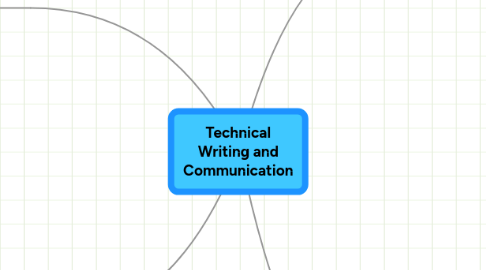
1. Chapter 2: Rhetoric & Technical Communication
1.1. Rhetorical Problems
1.1.1. Exigency and Purpose
1.2. Audiences
1.2.1. Vary Significantly
1.2.2. Have Expectations
1.2.3. Have Attitudes
1.2.4. Use Documents Differently
1.2.5. Multiple Audiences often Read Documents
1.3. Workplace Writers
1.3.1. Correctness
1.3.2. Experience
1.3.3. Expertise
1.3.4. Goodwill
1.3.5. Identification
1.3.6. Trust
1.4. Contexts and Constraints
1.4.1. Factors can influence writing
1.5. Documents
1.5.1. Must know how to create documents with needs and expectations met.
2. Chapter 3: Technical Communication & Electronic Technologies
2.1. Creating Documents
2.1.1. Word Processors
2.1.2. Presentation Software
2.1.3. Graphics and Imaging Software
2.1.4. Web-Authoring Software
2.1.5. Desktop Publishing Software
2.1.6. Help & E-Learning Authoring Tools
2.1.7. Single Sourcing Programs
2.2. Communicating and Collaborating
2.2.1. Internet
2.2.2. World Wide Web
2.2.3. Email
2.2.4. Ethics and Electronic Communication
2.2.5. Electronic Messaging
2.2.6. Videoconferencing
2.2.7. Groupware
3. Chapter 1: Technical & Professional Communication
3.1. Genres of writing:
3.1.1. Emails
3.1.2. Manuals
3.1.2.1. HTW: Manuals
3.1.3. Letters
3.1.3.1. HTW: Questionaires
3.1.3.2. HTW: Newletters
3.1.4. Websites
3.1.5. Proposals
3.1.5.1. HTW: Request for Proposals
3.2. Characteristics:
3.2.1. Rhetorical
3.2.2. Audience Centered
3.2.3. Technology Centered
3.2.3.1. HTW: Global Communication
3.2.4. Ethical
3.2.5. Research Oriented
3.2.5.1. HTW: Collaborative Writing
3.2.6. Professional
3.2.7. Visual
3.2.8. Concise
3.3. Activities of Technical & Professional Writing:
3.3.1. Planning
3.3.1.1. HTW: Brainstorming
3.3.2. Researching
3.3.2.1. HTW: Copyright, Bibliographies
3.3.3. Organizing
3.3.4. Drafting
3.3.5. Designing
3.3.6. Revising
3.3.6.1. HTW: Voice, Tense, Syntax, Point of View, Double Negatives
3.3.7. Rewriting
3.3.8. Editing
3.3.9. Testing
3.4. Problem Solving Approach(PSA):
3.4.1. Plan
3.4.1.1. HTW: Layout & Design
3.4.2. Research
3.4.2.1. HTW: Research
3.4.3. Draft
3.4.3.1. HTW: Layout & Design
3.4.4. Review
3.4.4.1. HTW: Proofreading
3.4.5. Distribute
3.4.5.1. HTW: Sending an E-mail Attachment
4. Chapter 4: Ethics & the Workplace Writer
4.1. Ethics
4.1.1. Right and/or Wrong
4.1.2. Metaethics
4.1.3. Normative Ethics
4.1.4. Applied Ethics
4.2. Ethical Guidelines for Workplace Writers
4.2.1. #1: Ethics and Laws are not the same
4.2.1.1. Liability Laws
4.2.1.2. Environmental Laws
4.2.1.3. Copyright Laws
4.2.1.4. Patent Law
4.2.2. #2: Be Honest
4.2.3. #3: Respect Confidentiality
4.3. Ethics in Context
4.3.1. Situation & Perspective
4.3.2. Circulation
4.3.3. Revision and Editing
4.4. Ethics & Technology
4.4.1. Websites
4.4.2. Visuals
4.5. Avoid Unethical Writing
4.5.1. No Deceptive or Evasive Language
4.5.2. No Obscure Issues
4.5.3. Jargon
4.5.4. Plagiarism
